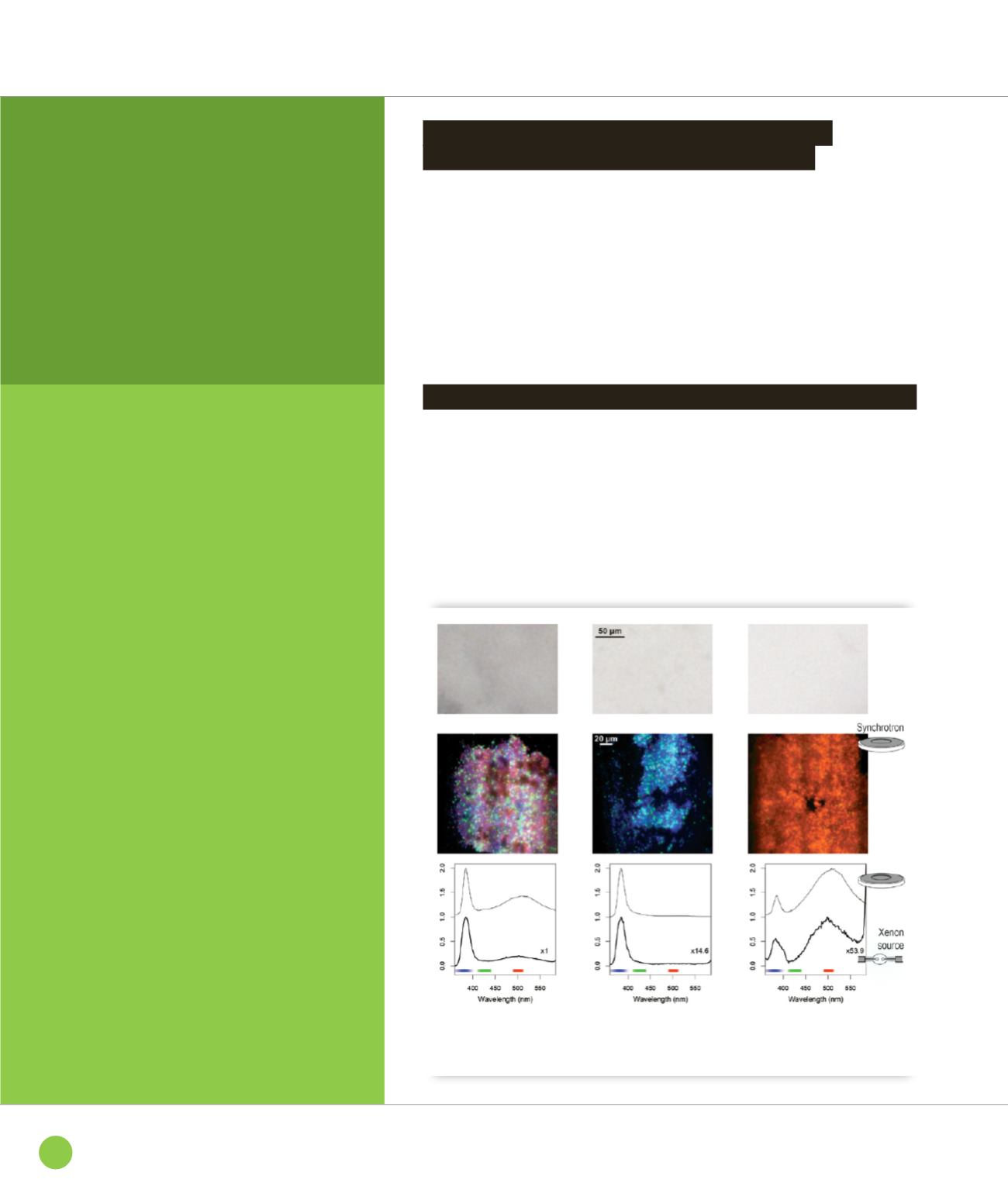
Synchrotron UV/visible
imaging discriminates
historical pigments
Careful chemical and physical
characterization of pigments used by
artists can tell us about artistic intent, trade
in source materials, historic technology
and more. We looked at the pigment zinc
white, ZnO — used in the antique world
as a medicine and cosmetic, and in the
Western world as a pigment from the late
eighteenth century on. ZnO is a class II-IV
semiconductor having a wide band gap of
c. 3.37 eV and, in general, an intense
emission at c. 380 nm. However, we found
that historic samples of the pigment have
very distinct and diverse photoemission
behaviour, inhomogeneous at the nanoscale,
which can be used to discriminate among
different sources, perhaps even different
batches of the material.
ZnO photoluminescence (PL) spectrum
is very sensitive to defects created
by impurities and vacancies in the crystal
structure. Historical preparations of ZnO
include the indirect process from molten
metal, the direct process from an ore,
and wet (precipitation) methods [1].
These methods give products that can
be highly pure and apparently
homogeneous. However, even among
one manufacturing process, variations
in the photoluminescence behavior of the
product occur, and at the microscopic level
different crystallites can have different
emission behavior. Within this work, a
novel methodology is developed to acquire
quantitative data on the heterogeneity
of PL properties of semiconductors
pigments at the scale of individual grains.
We gathered examples of historical ZnO
pigments collected from international
institutions. The sample preparation
consisted of dispersing pigment in
powder form onto indium foil allowing
preservation of the distribution of the
grains while minimizing mechanical
stress and sample contamination,
and preventing interference on PL
properties from embedding materials.
The approach relies on the stability
of the synchrotron UV source and its
tunability in the 180–1000 nm excitation
range, two critical parameters for ancient
materials studies [2,3].
ZnO, a semiconductor pigment whose emission
is sensitive to production method and source
Accessing the luminescence of individual pigment grains
PHYSICS AND CHEMISTRY OF CONDENSED MATTER, EARTH SCIENCES
➊
Study of three distinct historical zinc white pigments. From top to bottom: light microscopy images,
synchrotron full-field PL images on a common intensity scale (40× objective), spectra from raster-scan
synchrotron PL (thin lines) and laboratory macroscopic measurements (thick lines).
94
SOLEIL
HIGHLIGHTS
2013


